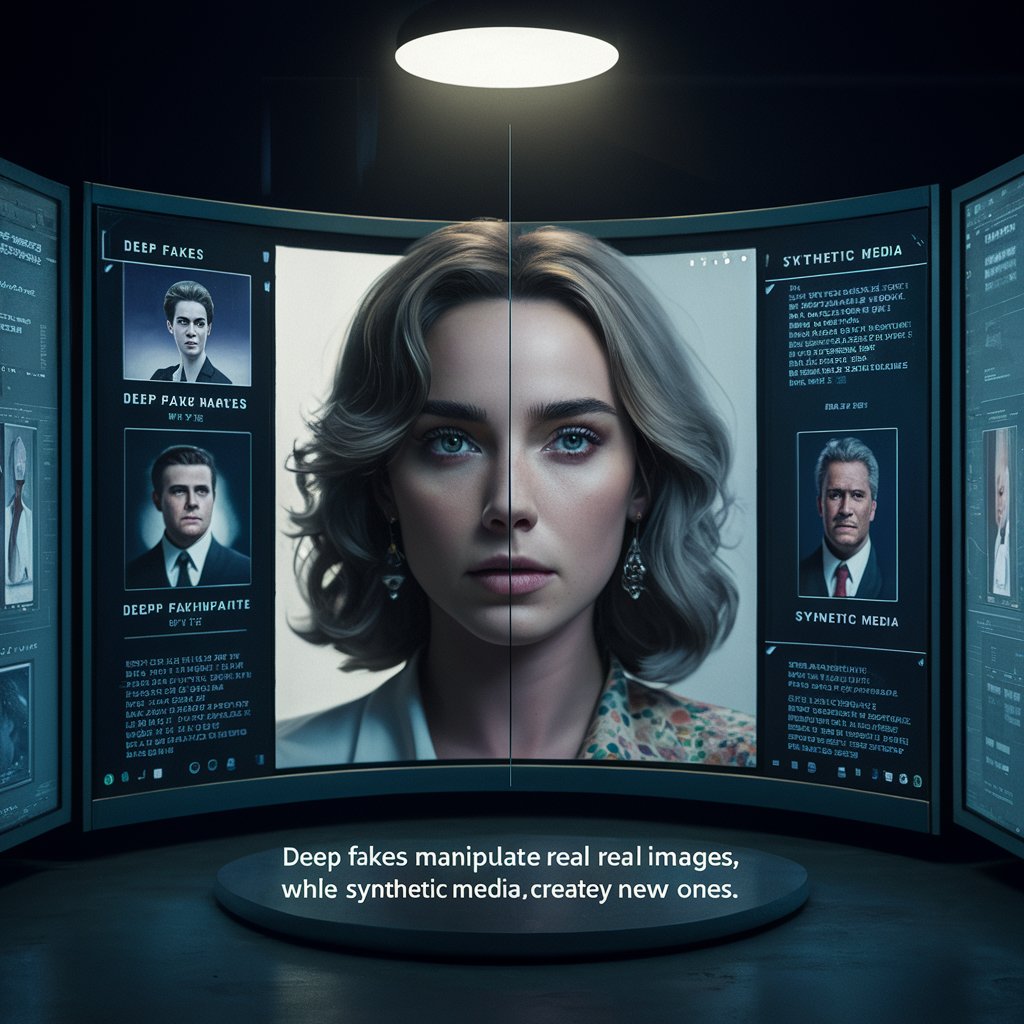Synthetic media and deepfakes make the person confused but both of them have a huge difference. Synthetic media is a form of content produced by artificial intelligence–it can be images, videos, and audio. Deepfakes, on the other side, are a subset of synthetic media that are particularly involved in deep learning techniques. In simple words, deepfakes are used to create a highly reasonable but fake presentation of individuals. When we specifically talk about “what is deepfake”? Then we specifically talk about its importance to understand the manipulations that occur in this process. But synthetic media refers to the use for various positive purposes, such as virtual assistance or creativity enhancement.
Risks of Deep Fakes in Public & Business
Deepfake technologies pose important risks to the public and business sectors. If we specifically talk about public places, the deep fake is usable as:
- To unfurl the wrong information.
- Exploit the public opinion.
- Involving in the democratic methods.
However, the possibility of deep fake attacks in political areas can be a rising concern. Deep fake attacks can involve the business world in such ways:
- Damage to the business reputation.
- Exploit the stock material.
- Enhancing the fraud activities.
Therefore, companies should be extremely vigilant and try to adopt strong deep fake detection ways to protect their data, money, and interests, and manage their reputation in public.
Ways to Address and Resolving DeepFake Attacks
To address and resolve the deepfake attacks demands complete multi-faceted methods. Let’s these methods in detail below:
- The advanced deep fake verification systems are important as the best technological solution.
- Because these types of tools utilize artificial intelligence to identify the inconsistencies within the videos and images.
- Inconsistencies that deep fake detection technology highlights are not visible to the naked eye.
- Furthermore, there should be a legal framework for stopping and punishing those who create and spread dangerous deep fakes.
- Researchers and various tech companies can collaborate with the government to implement and develop deep fake attack solutions.
- Besides, it is important to educate the people about the deep fake danger and signs that will significantly impact on the reduction of deep fake frauds.
Methods to Keep the Public Aware
There are several ways to keep people aware of the risks and substantial of deep fakes. Conducting educational campaigns can help people gain knowledge about deep fake working mechanisms and potential dangers. Also, providing media literacy programs can help each person develop a critical understanding of online content authenticity. Having partnerships with social media platforms and fact-checkers can be reliable for quick identification and deep fake content removal. The distribution of knowledge and tools for deep fake verification can prominently prevent society from technological harmful effects.
Future of Deepfake Technology
The deep fake technology future is exciting but concerning because the development in AI and ML can be caused by experience and undetectable deep fakes. This advancement will increase a massive challenge for the deep fake detection process. Besides, the exact advancements can lead to verification tool betterment, easy detection, and protection the deep fake attacks.
Statistics on Deep Fake Technology
Recent studies by Cybersecurity firms and academic research have shown that the pervasiveness of deep fake technology is at its peak. However, some reports reveal that several deep fake online videos have significantly enhanced in the past few years. For instance, Sensity—A Cybersecurity company expert in detecting deep fake frauds revealed that the deep fake video ratio increased from 2019 to 2022.
Furthermore, the rise of threats for the deep fake technology exploiting the public trust, privacy, and security. According to the University of Oxford’s Computational Propaganda Project, political deep fakes are becoming experienced, wide-spreading by the possible implications for electoral integrity and social support. These statistics are important highlighting the use of strong deep fake detection methods and regulatory frames to reduce the possible risks that relate to synthetic media exploitation.
Legal and Ethical Considerations
The legal and ethical behavior of the deepfakes is crucial because recent laws are not enough to address the distinctive challenges posed by the deepfake technology. New law formulations are required to particularly target the producing and spreading of harmful deep fakes. Some ethical behaviors such as having the balance between freedom of expression and harm prevention.
